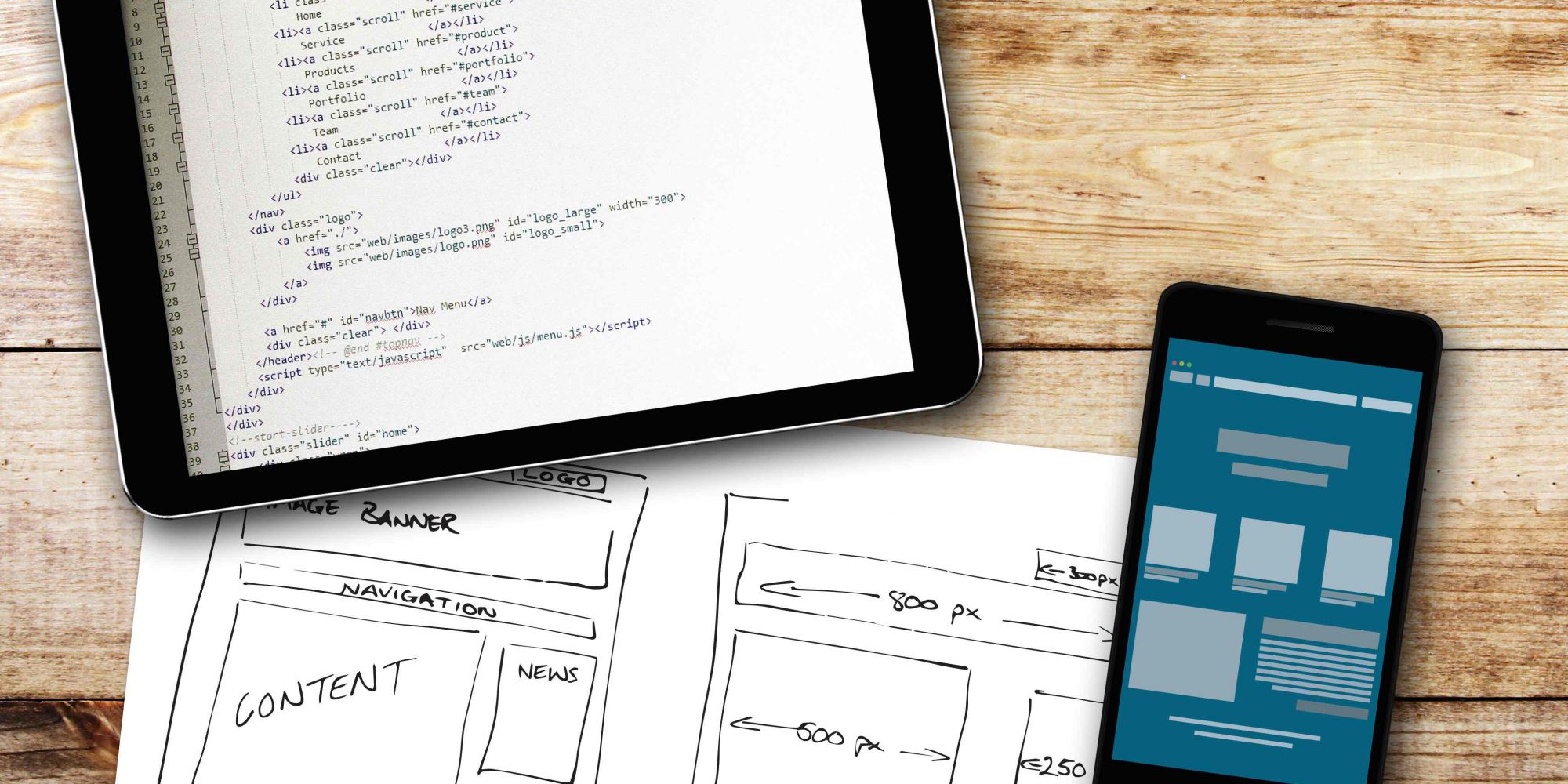
Weaving Your Web: Indie Beauty Brand Founders Reveal How They Developed Their Sites
In this edition of Beauty Independent’s ongoing series posing questions to beauty entrepreneurs, we ask 16 founders and executives: What was it like to build your website, and what might you have done differently?
- Tina Hedges Founder and CEO, Loli Beauty
It’s such a wild west out there in the digital agency land, and we had a disappointing experience with our first few agency interactions. We knew we needed to customize on top of Shopify to give our customers the ability to personalize our superfood, organic beauty products into something all their own. So, we needed an agency that was adept at both UX/UI and could execute against our high aesthetic standard.
We also wanted to find a group that could iterate nimbly on both the front end and back end. This wish list was nearly impossible to find in one group. After many stops and starts, we created an agile approach with two outside groups that are teams of two. When we made this change, we were able to ramp up our site quickly.
In retrospect, I would never hire a big shop with lots of promises and snazzy presentations again. Most likely, if you have a small budget as a start-up or indie brand, your project will get outsourced to a team that you never met or vetted. The talent that sold you on the agency is, most likely, not the team that will work on your project.
Also, don’t rely on a project manager to deal with all the details. Learn the programs and platforms the coders are using to help streamline the communication process. We now design right into Figma. Our engineer, in real time, works alongside us and shows us iterations using real code. We also use Trello to project manage and FullStory to actually learn from consumers’ behavior online.
- Corinne Lefebvre Founder, River Organics
The process of building a website can seem overwhelming. Initially, I thought about it as a business card, going for clarity and a few good quality photos. Mapping out the process on paper helps to get a feel for the flow, organizing by collection, for example, and, then, adding each relevant product.
I always try to finish what I start. Leaving things half-finished could impact the user's experience, and they may not return. Test your website as a user, click on each link, read each description and see if it is coherent. Most platforms allow you to do a test run before committing and paying. I chose Shopify because the back end is very clear and easy to use, and there are a lot of message boards you can read for tips.
I use one of their free themes, Debut, and try not to mess with any coding, and use Shopify apps to help with technical aspects instead. Some great Apps include Photo Resize App by Pixc to make all the images on the website look the same size. Mailchimp and Shoppable Instagram Galleries are also great. The best part of Shopify is that it can be linked to Instagram and allow for a seamless shopping experience.
I wish I had taken a little more time learning about Google before launching the website as there is a big learning curve in understanding the search engine, and how to optimize images and descriptions. Luckily, there are apps to help with that, too. I like to edit and make little changes to my website several times a week, updating events, pictures and improving descriptions. The website should be something you constantly feed and tweak [in] your company's voice.
- Candice Capps-Tate Founder, Henry Charles
We designed and launched our site in a very short time frame, within about a month, and outsourced overseas. It was expensive and the back-and-forth communication due to time differences and language barriers cost us time. Time that could have been better spent on other things. If we could do it again, we’d definitely use the company we’re using now, which is in L.A. and so much easier.
- Chris Collins Founder, Chris Collins, Alchemy of Fragrance
Building the website was a very arduous process. This is the platform where you showcase your products and tell your story to the world, so it has to be done right. Let’s just say my web designer [and I] became very, very close during the build. I’m very meticulous the way I want things, and my designer was so patient with me and did everything exactly the way I wanted.
I also had to be flexible and open-minded enough to take suggestions as well. Our tandem was perfect. We danced very well together. There’s nothing I would do differently, but I know in time as my brand evolves, so will my ideas of what my website should look like.
- Eugene He CEO, Ceramiracle
We started the brand with a customized built-from-scratch website and, if I could go back and do things differently, I would have started with a hosted and managed platform such as Shopify instead. We spent too much time and resources building the site and supporting it. In hindsight, those resources would have been better spent on improving our social presence.
- Lisa Markel Owner and President, Seriously Fab
Building a great website has been a struggle since the beginning and we're still not 100% where we want to be with it. Someone recommended WordPress early on, so we went with it and kept trying to make it work, but it ended up being a big mistake. It is not user-friendly at all. Every time we needed a change, I would have to contact our website guy. He would, of course, bill me by the hour which became very expensive. All in all, we probably sunk around $8,000 into that platform, and it just never looked that good.
After many months of aggravation, we recently switched over to Shopify. So far, so good. My regret is that we didn't do Shopify from the get-go. The template and layout look nice, and simple changes are easy to customize in the online store. Now, we are working to incorporate better quality photos and looking to add videos.
At the end of the day, you just want to deliver a compelling message and get your brand image across in a strong way so consumers feel totally confident in buying your product. I think you are constantly trying to improve in one way or another. I'm a perfectionist. So, if it doesn't look amazing, I'm not happy.
- Angelica Caporuscio CEO, Veíse Beauty
I feel like there were a lot of lows initially when building our website, and that mainly came from not knowing where to start. I really had to sit down and figure out what our brand message was to figure out what I wanted the site to look like. The look of our site has changed at least 10 times and will continue to evolve as we grow.
We ended up choosing Shopify for our platform, but, if I were to go back, I would design our site through WordPress. WordPress has a stronger base for SEO capabilities, and customizations you can do without having to pay for additional apps. That's the thing you have to watch out for with Shopify.
Although it's very easy to build a website fast, it can get really costly once you start adding a bunch of apps to customize your store. Keep it simple, and don't add apps until you need them. It's really easy to rack up a $500/month Shopify bill without even knowing it. If you don't feel like you're going to get a return on that $50 app, but another site has it, skip it. You have to be in tune with what matters for your customers, not the skincare company on the other side of the internet. At the end of the day, you're building your brand, and I think it needs to be unique to your vision instead of getting caught up in what others are doing.
- Andrea Lopez Aesthetician and Founder, Bonum Vitae
Imaging is big. People get an impression of your product when they first see your website. Getting the right hosting was a learning experience. I would suggest taking a class or having someone teach you how to create and navigate it. That way you aren’t relying on someone for changes.
- Sébastien Tardif CEO and Co-Founder, Veil Cosmetics
It was a very boring and tedious process, but necessary because online is the future of retailing. It is fair to mention that a website is never done or complete as it requires constant evolution and amendments to keep up with technology and the beauty world. We used the help of a web designer, and we chose the Shopify platform as it's more economical, and they have a great choice of templates. We always use a team of reliable, regular consultants in graphic design and photography for everything we can't do in-house.
- Matthew Stillman Founder, Primal Derma
Our site was really well conceived by Illana Burk of Your Life's Workshop on WordPress. We are happy with the way the site looks and how it captures our sensibility. Illana is a hidden master of branding and design. A website is a living being of a kind. It necessarily has to be different as you progress.
The site we launched with isn't the site we have now. Language changed, pictures changed. Some stuff is there that is on its way out right now. So, to wish that the site was different than it was or is now is to somehow be at war with where we find ourselves and what we have learned. We are very fortunate to be where we are.
- Deb Pereira Owner and Founder, Neon & Co. and TLW Products
We encountered lots of challenges in the process of building our website, and one of the reasons for this is that we didn’t think we’d grow to the extent that we did. My business started as a salon. So, at the time, we used the website as a medium of providing information, and later had to refocus on e-commerce and customer experience and realign our objectives.
We are having to make a lot of changes to achieve this and are connecting with experts in the field to help us along in terms of adapting our platform for maximum results. From my perspective, the main lesson to be learned is to focus on simplicity and customization as the online customer experience needs to flow just like it does in person. It needs to be personable and easy to use, which sounds simple in theory but is much harder to implement effectively.
- Kate Lee Founder, Velvet
The best part about creating a website is designing the entire customer experience. We were building something from scratch, and there is nothing more freeing or terrifying [than] that. I loved that my team and I had free reign to create our web presence and it was incredibly useful to build our site from a framework like Squarespace.
The hardest part was working on our brand. This website was the window to who we were and what we would offer. We went through a few rounds of branding brainstorm sessions until we had a firm mission statement from which to build our whole identity. We thought about every little facet of our brand, and how it could be translated into a web interface. Understanding who we were and what we wanted to provide for our customers meant that communicating this through our website had to be crystal clear. From there, it was a matter of developing a lookbook with a graphic designer that fit our goals and mission.
The Squarespace templates available were very easy to customize once we had a brand identity in place. We worked with a designer to develop our logo and produce some simple illustrations. I'm fortunate enough to come from a user experience and usability research background, so we were constantly testing and building out parts of our website with the user experience in mind. We wanted to make sure that our products not only stood out, but that all of our copy, our buttons, and our images were loading appropriately and driving home a clear message.
Looking back, the only thing I would have changed was to spend more time wireframing or prototyping the website and planning each page and its elements more thoroughly, perhaps testing it on a variety of users to get their feedback. Designing an e-commerce platform is such an immersive end-to-end experience that requires user-friendly design, and there is no more powerful input than customer data.
- Heather Urquhart CEO and Founder, Huna Natural Apothecary
The first version of our website, I built myself. Not recommended. The second version of our website, I outsourced to a creative design agency, which had no experience in e-commerce. Not recommended. The third version of our website, which is our current version, is now aesthetically beautiful, designed well to communicate our brand, and more optimized for e-commerce than any of our previous versions. That being said, driving traffic and executing conversions is still, and will continue to be, a huge focus.
My key learnings are: invest in your website and never stop investing both from a brand/design/creative perspective and from an e-commerce/performance perspective. Your website is the face of your brand. It’s how people discover your brand and its uniqueness is how your customer, media, retail accounts, everyone, will learn about everything your brand represents. Or it is how your customer will get disappointed, frustrated and, ultimately, leave your website if you’ve executed poorly on either the brand/creative or e-commerce/performance side.
Ensure you put thought upfront into your tracking measures for your website. What do you need to track and review regularly to determine the performance and success of your website? Set it up from the beginning so you have proper data and insights to review regularly. Investors will look for this.
Leverage e-commerce tools that work: mail list pop-ups, optimal button placement, landing page mapping, product reviews, plugins for subscription repurchases, etc. It seems like annoying stuff, but it actually translates to a better shopping experience for your customer and increased metrics for your brand, which translates to increased conversions and, ultimately, revenue, if done right.
- Julia Teren Founder, Thesis Beauty
Since our launch years ago, we used probably every platform out there. Right now, we do Shopify, and it seems to be the easiest platform ever. If we were launching tomorrow, I would choose it again. I wish there had been something like that available to us from the start. When we needed to build a website, there were either very complex options or incredibly simplistic ones.
Initially, the very thing that we enjoy now, simplicity, was the deterrent because we wanted a lot of features like a complex coupon/sale system, hosting two stores in one, highly customizable template, etc. For those purposes, we chose Magento. Later, we realized that a feature-robust platform is just too much for us. It was difficult to navigate, difficult to learn and, ultimately, we ended up not even using all the features that we craved before.
After switching to Shopify, we definitely felt a big difference. It's so intuitive. It doesn't have a lot of features we were used to, but we learned to work around it. Sometimes, we get carried away by exploring all the very useful and necessary apps. Then, again, we remind ourselves that less is more.
- Pille Lengi Founder, Tilk!
Building our website was a long and difficult process because of our restricted budget and lack of in-house IT skills for building a website of our own. It was hard to find a partner who could do both the UX design and technical solution behind it well. We required the website to have an online store. Finding the right platform and template which would support our current needs and our potential needs in the future, which we were not really aware of yet, was challenging. We decided to go with the WordPress platform because of simplicity, variety of plugins and active developer community around the platform.
- Danuta Dudek Founder, Cotarde
Building a website is quite a complicated process, and we’d discussed it long before the actual development process took place. We don’t like anything complicated or boring, and we didn’t want to be like all the other cosmetic brands with 1.) discount/email registry, then, 2.) large slides about Xth new product.
We knew our website was going to be inspiring, simple and movable since all we are about is the instant change, surprise and fun. Plus, we are the only brand for people on the go, so it had to feel different. Our website was a fully customized page as no template was able to match what we wanted. We had a very professional, experienced team and quite nicely organized process that took a few months to execute. At this moment, we can’t see anything that we would have done differently from creating the architecture for an easy navigation and functionality to its design details [to] match our aesthetics and what the products are actually about.
All these steps were done one by one without an unnecessary mix-up that would ultimately compromise the look of the page or create a delay of the launch. It doesn’t mean the website will stay still. People’s expectations, including ours, are changing, and the internet is changing, too. At some point, we will feel like it needs to be updated.
If you have a question you’d like Beauty Independent to ask beauty entrepreneurs, please send it to editor@beautyindependent.com.






Leave a Reply
You must be logged in to post a comment.